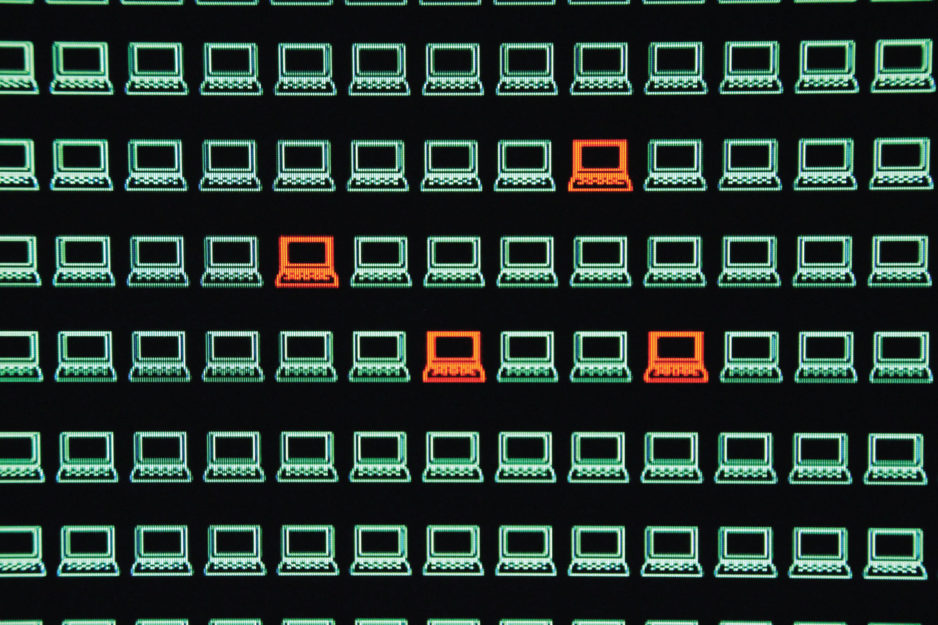Building and managing a help desk in your organization can either become a triumphant, effective tool or end up an untouched resource collecting dust on the IT project wall of shame. Where does the difference lie? It’s all about creating a help desk plan with the right people, tools, and strategies. Putting them all together will not only guarantee successful adoption and positive feedback from your users but will result in helping YOU lighten your workload and lower that always elevated stress level.
Here are eight effective steps to take when looking at how to improve help desk management, efficiency, and performance and even how to build a help desk from scratch.
1. Document Help Desk Processes and Procedures
Your team’s ability to effectively deliver support services will vary depending on who performs the work, how they are feeling that day, whether they have had their morning coffee, or many other external factors without clearly documented processes and procedures. Documentation is the foundation for help desk efficiency and success.
Clearly lay out your guidelines and expectations for support personnel, in addition to the specific steps to be performed with recurring situations, to create a uniform support experience for your end users.
Documenting processes and procedures also allows you to visualize from a high vantage point how your help desk system works from A to Z. This can reveal inefficiencies to be optimized, gaps that need to be filled, or additional areas that need to be documented.
Giving everyone access to clear documentation and encouraging them to contribute to it will develop your team’s confidence in performing their duties and lead to increased productivity and efficiency for everyone. The book Work the System by Sam Carpenter, is a great resource that can help you implement effective process and procedure documentation.
2. Implement a Help Desk Ticketing System
Imagine walking into the dry cleaners to pick up your jacket without your receipt. You have nothing that connects you to that new sports coat. This is like having a help desk without a ticketing system. A help desk ticket gives you and the end user a unique number to reference for each specific problem. Email chains can trail off, get broken, or be forgotten. Tickets allow you to group all communication between the technician and end user around the ticket number, eliminating confusion about who responded, at what time, or if the issue was resolved.
Good ticketing systems also allow you to assign “Issue” and “Sub-Issue” types, as well as “Priorities” to sort incoming issues. Technicians can then determine what issues they are most qualified to solve and which are most critical. This can also reveal common issues users experience most frequently. Clear trends can allow you to proactively address the root problem of those issues.
Tracking how much time team members spend on resolving issues is another advantage which can identify areas for better documentation, opportunities for further training, and even help team members answer that simple question: “What did I do all day?”
Using a ticketing system can also help you better define and communicate response expectations. How long does a user have to wait to hear back from someone? How long does it take to solve an issue? These insights can help track and improve service levels and shorten resolution times.
Warning: There is room for ticketing system failure! If calling, emailing, or walking over to a technician’s desk is how your end users got results in the past, they may try to continue to use those methods. Your technicians may need to encourage end users by giving them a refresh on how to use the system. Help desk ticketing systems can also be set up so that users can send emails to the help desk email address and that email will open a new ticket. Helping end-users comfortably transition is the key to success.
3. Utilize Remote Tools for Help Desk
How much logistical time-savings could be realized by your technicians if they could leverage a remote support tool instead of providing desk-side support? Remote tools can help you improve help desk processes by finding problems faster and providing deeper insights into an ailing computer system than can be accomplished through manual discovery.
Many remote tools now give background access to view processes, services, event logs, and even provide live command line access to a user’s computer, without having to interrupt them. This allows your team to immediately start investigating a problem, without the inevitable user productivity loss while waiting for you to analyze their system.
Remote tools can more quickly, accurately, and completely document a computer system’s specifications than any technician. Having those specs on-hand can be a time-saver when trying to narrow down a particularly difficult issue, or even when doing routine inventory. The advantages of using remote tools simply add up to more productive time for both technicians and end users.
4. Manage Your Team’s Passwords
If remembering passwords were easy, everyone would be able to do it. Unfortunately, the idea of managing passwords often degrades into using sticky notes, Excel spreadsheets, and worse – reusing the same password for every account. If this is bad practice for an individual, imagine how much worse it is for a help desk team!
A password management tool is a non-negotiable for an organized help desk team. It allows technicians to easily retrieve the passwords they need while ensuring no one individual can run away with the keys to the kingdom. There are several good password management tools for teams including 1Password for Teams and LastPass Enterprise.
Some even provide features such as password history and reporting on weak passwords or passwords that haven’t been changed within a certain period of time. These insights can ensure your passwords are adequately complex and periodically refreshed. It also means a password is recoverable if it was updated in the documentation but not actually changed on the device or account in question. Features like these can add security and stability to your operations.
5. Invest in Training
Technology is always changing and your help desk team needs to keep pace to effectively serve your users. Google-fu is a great resource that may help you in the short term, but knowing your environment and systems well enough to avoid researching every issue will quickly raise technician efficiencies and improve help desk performance. Encourage your team to keep up on industry certifications, leverage online training and webinars, and invest in continuing education.
With so many good training resources available online for little cost, don’t limit training to just a technical focus. Be sure your help desk team is adequately trained on phone and email etiquette, as well as customer service and even typing skills. Some may need retraining on documentation or time management. Support your technicians by providing time for them to dedicate to training and your organization will see the benefits by their increased effectiveness in handling end user issues.
Cross-training is just as important – the last thing you want is for your one Cisco expert to be sick or on vacation when a Cisco issue crops up. Make sure that multiple technicians have shared skill sets to provide the redundancy necessary for stability when the unexpected occurs. End user training can also help alleviate help desk tickets.
6. Strategically Use the Time You Gain
What does your team do with down time? Ok, you probably laughed at that question! In the world of IT management, very little downtime exists, but what if you had more time when you weren’t putting out fires? You need to use it to finally tackle that preventative maintenance way down on your list.
When was the last time you did a network assessment? Are there servers that need to be patched with the latest Windows updates? What about outdated user laptops or workstations? What devices are nearing end of warranty or end of life that need a replacement plan? What other attention could your environment use to avoid problems later?
Having a help desk system in place is a win-win for you here! By more effectively handling your end user problems and issues, you gain time for doing those preventative tasks that will in the long run help reduce end user problems. Extra time strategically invested now means less reactive problem-solving later, which translates into smoother operations, happier users, and fewer headaches due to emergencies.
7. Follow the Golden Rule
The golden rule needs to be on the wall of every help desk team: treat users as you would want to be treated – with patience, understanding and respect. Let’s face it – help desk support is all about people and we need to treat users as we would want to be treated if we were the ones outside of our areas of comfort and expertise. For the successful help desk team, attitude will mean everything. That can require controlling any expressions of frustration and having a determined willingness to repeat things several times (and in numerous ways) until understanding is achieved.
Remind your help desk team that few users are experts in computer troubleshooting, and to have patience when listening to problems described in “non-IT” terminology or when getting the long rendition of “what they were doing just before it happened.” Responding with sympathy and encouragement to calm a frantic user who just lost a document, will help solve the problem faster.
Treating users with respect builds a relationship of trust and can help you do your job better. When you show an interest in resolving your users’ problems, they become more communicative about the issues they are facing and you can discover and address problems you would otherwise not know about. Everyone is in this together and wants the same thing: a tool where end users can freely express problems and pain points knowing that they will be supported by a responsive help desk. That will lead to a more smoothly run IT environment for everyone.
8. Don’t Do It Alone
If you don’t have enough resources or a help desk solution isn’t where you want to put your resources, you should consider CCB Help Desk Services. CCB’s help desk services can give you the services you need and support your end users with our highly trained and professional technicians. Leveraging the CCB team to meet your needs will help reduce fixed costs and increase your ROI by alleviating employee downtime, allowing your IT staff to spend time on projects that bring the company added value.
Using CCB Help Desk Services offers you the flexibility to adjust according to your capacity, handling changes in volume when you need it most, and our technicians are continuously updating their training to stay current on IT trends. We handle all levels of escalation and our Level 1 Help Desk is a call in help desk that will enter tickets for your users. Our highly effective technicians will keep communications and resolutions flowing seamlessly and make your IT team aware of recurring issues.
Need assistance improving your help desk?
Reach out to CCB to learn more about CCB’s Help Desk Services and the advantages of partnering with CCB for your help desk support.





